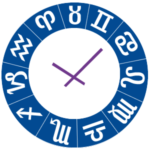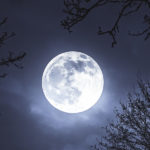A lunar calendar is a calendar that is based on the monthly cycles of the Moon’s phases. Instead of using a solar year like the commonly used Gregorian calendar, lunar calendars use a synodic month, which is about 29.53 days long. This is the time it takes for the Moon to go through a complete cycle of phases, from new moon to new moon again.
Some key things to know about lunar calendars:
Moon Phases
The Moon goes through a regular cycle of phases which repeats every 29.53 days on average:
- New moon – The Moon’s illuminated side is facing away from Earth, so the Moon appears dark to us.
- Waxing crescent – We start to see a sliver of the Moon’s illuminated side. The amount we see grows into a larger crescent over about 7-8 days.
- First quarter – Half of the Moon’s illuminated side is visible.
- Waxing gibbous – More than half of the illuminated side is visible, and it keeps growing over the next 7-8 days.
- Full moon – The Moon’s entire illuminated side is visible from Earth.
- Waning gibbous – The illuminated portion shrinks again over 7-8 days.
- Third quarter – Half of the illuminated side is visible again.
- Waning crescent – The illuminated sliver shrinks smaller each night over the next 7-8 days.
- Then the cycle repeats from the new moon again.
History and Culture
Lunar calendars have been used for thousands of years in many cultures around the world. Some examples:
- The Chinese calendar is primarily a lunar calendar, although solar influences were added over time. Each month begins with either a new moon or full moon.
- The Islamic calendar is strictly lunar. Each month begins when the thin crescent moon is visible shortly after the new moon.
- The Hindu lunisolar calendar uses both solar and lunar cycles. Each month begins with either a new moon or full moon.
- The Hebrew calendar is lunisolar. Months start with the new moon and must contain a Passover festival, keeping it aligned with the solar year over time.
- The Vietnamese and Thai calendars are variations of the Chinese lunar calendar.
Many calendars add an extra month from time to time to keep in sync with the seasons over years and decades. This is called intercalation.
Lunar calendars are important in setting the dates for many religious and cultural festivals in Eastern regions especially. Examples include Chinese New Year, Passover, Easter, Ramadan, Diwali, and more.
Certain lunar dates are considered auspicious for various activities like marriages, business deals, travel, etc based on astrology and spiritual beliefs.
Lunar phases have inspired imagery for poets and painters for millennia. The cycle was important to early civilizations in tracking the changing seasons and patterns over years.

Basic Terminology
Here are some common terms related to lunar calendars:
| Term | Definition |
|---|---|
| Moonrise | The time the Moon becomes visible coming up over the horizon at the start of night |
| Moonset | The time the Moon disappears going down below the horizon near dawn |
| Moon shadow | The shadow cast on the Earth by the Moon blocking the Sun’s direct rays |
| Lunar eclipse | When the Earth blocks light from the Sun to the Moon, usually tinting the Moon a red hue |
| Solar eclipse | When the Moon moves directly between the Earth and Sun, blocking our view of the Sun either partially or fully |
Lunar Calendar Variations
There are many kinds of lunar calendars which handle the complex lunar cycles differently:
- Pure lunar calendar – Has 12 months based strictly on moon cycles with no corrections. Starts losing alignment with seasons over years.
- Lunisolar calendar – Adds complexity to keep months aligned with Sun and seasons over many years through intercalation. Month lengths alternate and rules dictate when to add a 13th month. Examples are the Chinese calendar, Hindu calendar, Jewish calendar and some Korean calendars.
- Symbolic lunar calendar – The months may be defined for religious or social purposes but are not tied to actual moon phase observations or seasons. An example is the Islamic calendar which ignores seasonal drift.
Moon Symbols and Zodiac Signs
The cycles of the Moon gave rise to astrological interpretations in many cultures. Each Moon phase in the month is associated with different symbols, energies, and meanings.
| Moon Phase | Meaning | Image | Zodiac Sign |
| New Moon | New beginnings, planting seeds | 🌑 | Aries |
| Waxing Crescent | Momentum, progress | 🌒 | Taurus |
| First Quarter | First achievements | 🌓 | Gemini |
| Waxing Gibbous | Fine tuning, editing | 🌔 | Cancer |
| Full Moon | Fruition, projects complete | 🌕 | Leo |
| Waning Gibbous | Reviewing, final touches | 🌖 | Virgo |
| Third Quarter | Implementing lessons | 🌗 | Libra |
| Waning Crescent | Rest, recuperation | 🌘 | Scorpio |
The symbolism carries through astrology, Tarot readings, spell work, rituals, and more depending on the culture and spiritual beliefs involved.
So in summary, a lunar calendar uses the monthly moon cycles rather than the solar seasons as its foundation. It has deep roots across world cultures and religions, used to track time and determine the dates of ceremonies for thousands of years. Its imagery and meanings are rich and diverse, inspiring creative arts as well as spiritual practices across many traditions.
If you want to follow the moon phases and lunar calendar dates day-by-day, a great resource is the website Lunar Calendar. It shows you the exact new moon, full moon, and moon quarter dates. It also tells you each day what moon phase it is. Check it out to stay connected to the monthly rhythms of the moon!
Frequently Asked Questions
Why are there 12 months in most lunar calendars?
There are about 12 lunar cycles or moon phases from new moon to new moon over the course of a solar year. So calendars using moon cycles have naturally divided the year into 12 months.
Do lunar months have the same number of days?
No, most lunar calendar months alternate between 29 and 30 days in length. This matches the variations in the actual moon cycles from one new moon to the next.
Why does Chinese New Year fall on different Gregorian calendar dates every year?
The Chinese lunar calendar determines the date for New Year based on lunar cycles. Since these don’t align perfectly with the Gregorian solar calendar we commonly use, the date changes by around 4-5 weeks relative to January/February.
Does the lunar calendar lose sync with the seasons over time?
Purely lunar calendars will slowly lose alignment with seasons over decades since 12 lunar months don’t quite equal a tropical solar year. Lunisolar calendars use techniques like intercalary months to keep alignment with solar years and seasons.
On what day of the lunar cycle is the full moon?
The full moon falls on the 15th day of each lunar month. So during a lunar cycle from new moon to new moon, the full moon happens around the middle of the synodic month.
Why are new and full moons considered spiritually significant?
Many cultures and spiritual traditions see the new and full moon phases as ideal times to set new intentions, perform ceremonies, or celebrate festivals honoring the interconnectivity of all life. The amplified moonlight carries sacred feminine energy.
Why are the moon phases called “first quarter” and “third quarter” when you can see half the moon illuminated?
This is a common source of confusion! The terms “first quarter” and “third quarter” refer to the moon being a quarter of the way through its 29.5 day lunar cycle from new moon to new moon.
- First quarter means about 7-8 days have passed since the new moon. The moon is now a quarter through its total phase cycle.
- Third quarter means about 21-22 days have passed since the new moon. The moon is three quarters through the complete lunar month.
The term “quarter” does not refer to one quarter or 25% of the moon being lit. During both first and third quarter phases, we actually see 50% of the moon’s illumination shining from the sun – hence the half moon appearance.





